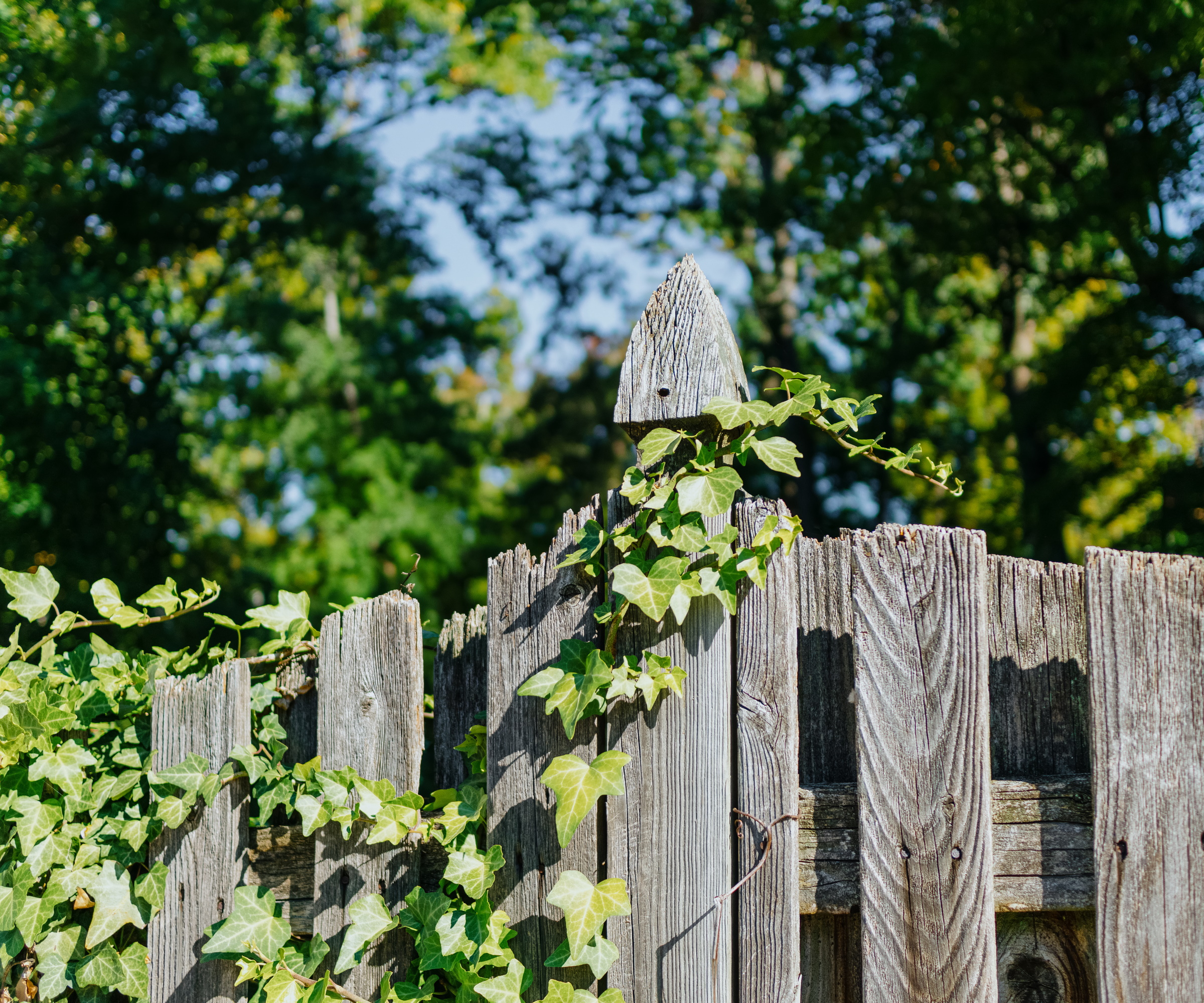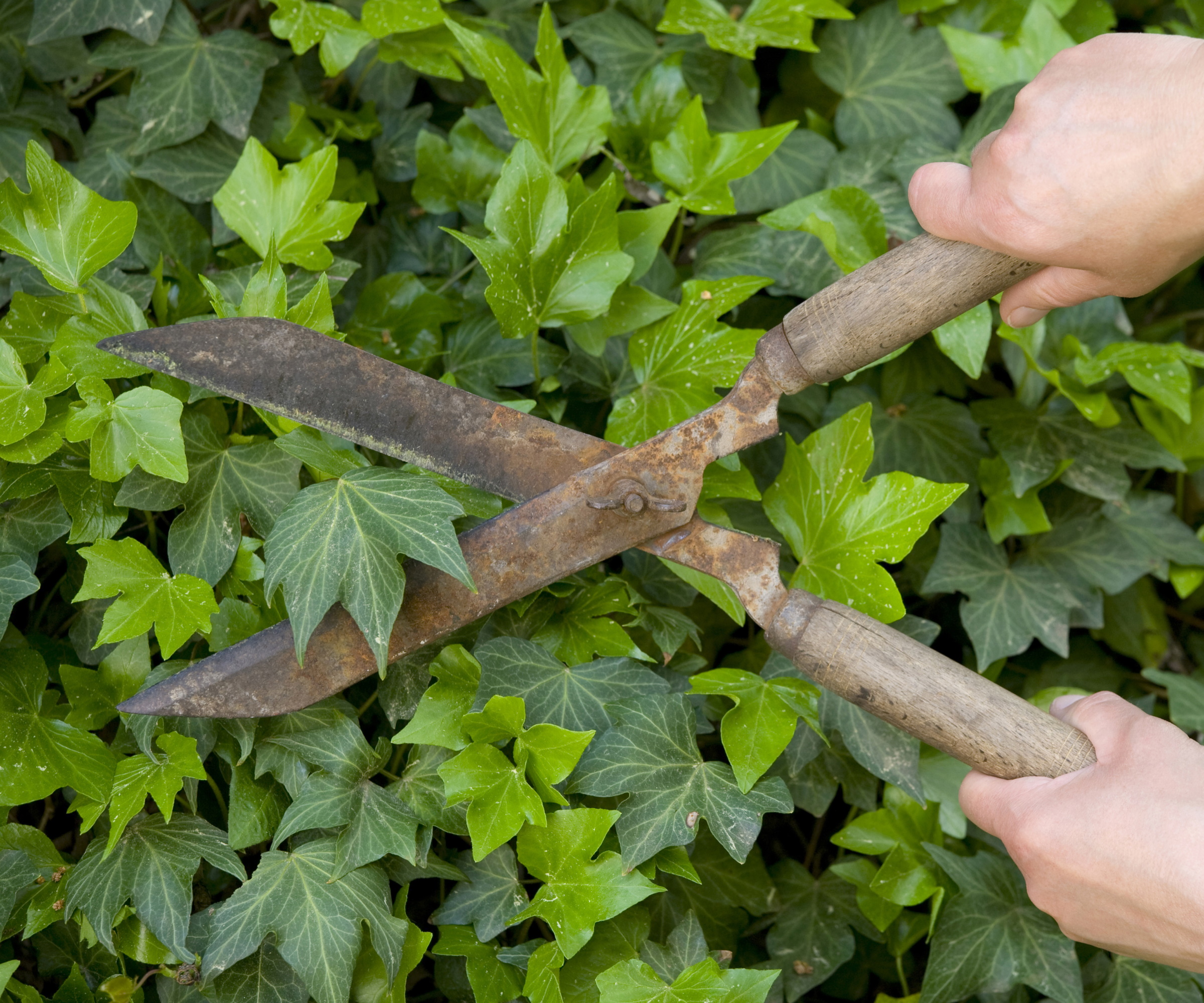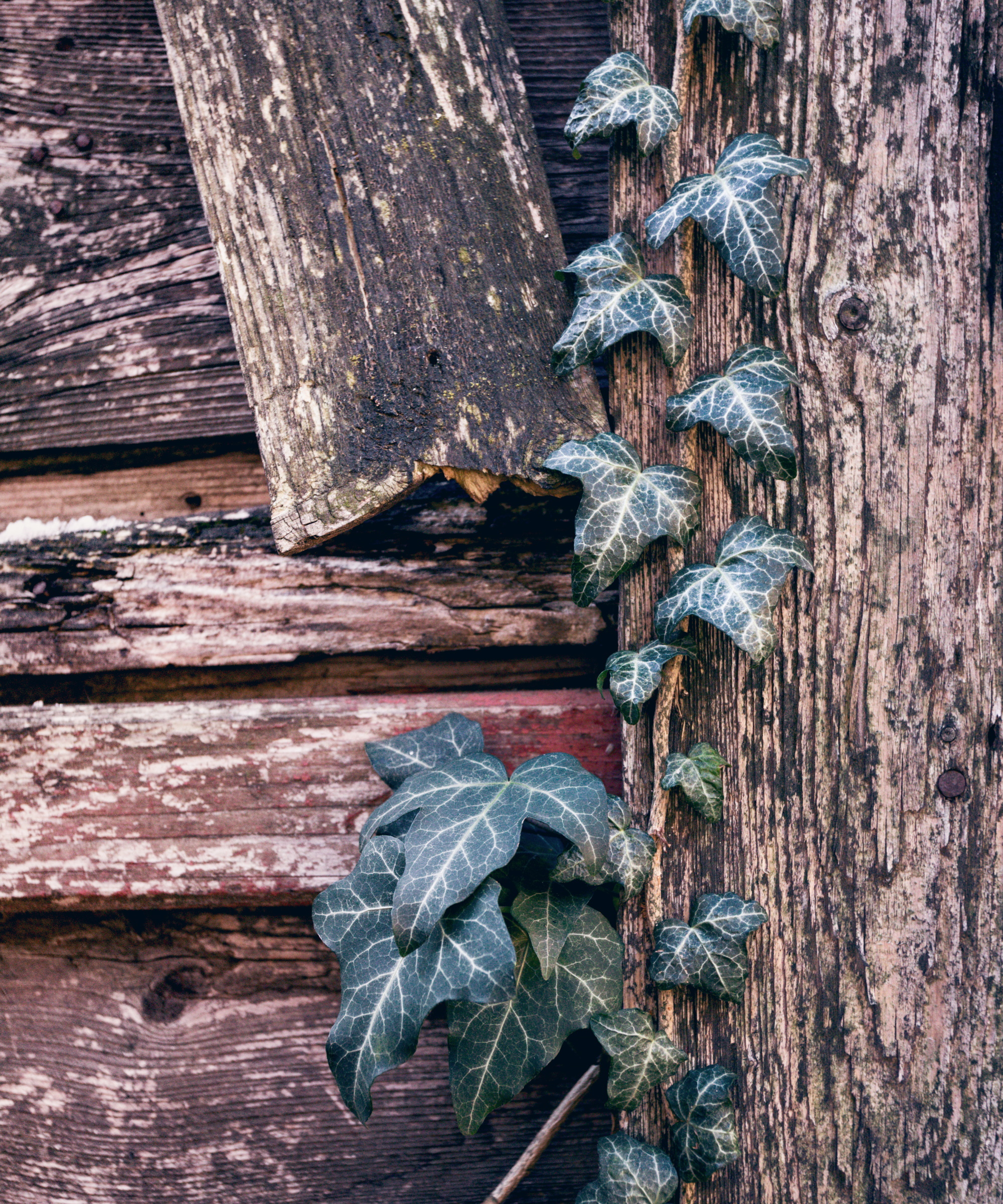
I'm personally fond of ivy – I think it can create beautifully luscious carpets and walls of green and yellow foliage in our yards. However, this climbing plant spreads profusely and can become a nuisance if it takes over areas of your yard that you don't want it to.
If you've chosen the perfect garden fence and have carefully decorated it, you may not wish for ivy to grow all over it. We already know that it's possible to get rid of ivy with vinegar as a method of killing off the plant, but there are also plenty of ways to easily remove it.
It might seem like a big job to tackle at first, but experts say it's simple to remove ivy for good in just a few steps.

How to get rid of ivy on a fence
There are so many varieties of ivy plants, all of which like to climb surfaces and cling onto them using their aerial roots. While they can be one of the best evergreen climbers, you may want to remove ivy growing over any fences you want to keep clear. Here are 3 simple steps to getting rid of ivy from a fence, as recommended by experts.
1. Put protective wear on

The first step to getting any garden task done is ensuring you have the right essential gardening tools to hand, including any appropriate protective wear. When it comes to cutting down plants, always make sure to keep your hands safe.
Using gardening gloves, like these gardening gloves from Amazon, will stop your skin becoming scratched by any sharp stems.
'In my current home, I have ivy growing on a short section of the fence which I don't mind all that much because it provides some additional privacy, but I do work on keeping it under control,' says Annette Hird, expert gardener at Easy Urban Gardens.
'I always wear gloves when I remove it because this makes it easier to grip the end of a vine and pull it off,' she adds.
You should also be cautious that in the process of removing ivy, dust and other particles may fly up from broken vines. That's why I recommend also getting your hands on something like these surgical masks from Walmart to prevent breathing anything in.
2. Cut the ivy right back

Once you're all geared up and have safety measures in place, it's time to get cutting. There are many tools you could use for this, so long as they're sharp and you make sure to clean your garden tools after use to prevent passing on any bacteria or pests to other plants.
'Generally, I just use a hedge trimmer to trim it right back and then cut off any wayward bits with my pruners,' says Annette. 'I also have to stop it from growing up a tree which is growing near the fence. Without keeping it trimmed, it would definitely take over and continue to grow over the yard,' she adds.
Whether you opt for a hedge trimmer, like this hedge trimmer with a saw from Amazon, or pruners, like these bypass pruning shears from Amazon, it's wise to prune ivy regularly to keep it under control or remove it all together.
If like Annette you don't mind a little bit of ivy on your fence but don't want it to take over the entire boundary, just prune it back a little at a time to keep it confined to one space.
3. Pull off remaining stems

Having done your best to cut away the majority of ivy vines and stems, you might find that a few stragglers remain in the crevices of your fence, or even along the bottom. Sometimes the best tool you can use for smaller jobs is your hands.
'The vines have aerial roots that adhere quite strongly to fences, buildings and other structures. It's actually quite satisfying to pull these off the fence,' says Annette. 'Sometimes you have to cut the vines from the main plant first and let them die to make them easier to pull off,' she adds.
If you want to stop the ivy growing back, it can be wise to pull up the roots. This will become easier once you have cut back the majority of the foliage.
Of course, ivy does also grow well in pots and can be contained well when grown like this. I grow ivy indoors as a houseplant where it's easy to stop it climbing surfaces in my home. Try keeping some of the vines from outdoors to grow ivy from cuttings and get an indoor plant for free.
These yellow gloves are both attractive and durable, made to be protect your hands but also soft and flexible for jobs that are tricky.
A pair of bypass pruning shears engineered from Japanese grade high-carbon steel to trim branches up to 1” thick
A pair of thorn-proof gardening gloves made of comfortable cowhide leather, with forearm protection against thorns and spikes
FAQs
How do you kill ivy?
One way to effectively get rid of ivy from unwanted places in your yard is by killing it to ensure it doesn't grow back. One of the most popular methods is using vinegar to soak the roots and foliage. Other effective solutions include using herbicides with glyphosate and digging up roots. Once foliage has turned brown from any sprays you've used, pull it all away to remove it.
Although beautiful and a classic for an English garden style, ivy can become invasive and take over surfaces quickly. Keep your fence clear by regularly cutting away and removing ivy vines with the appropriate tools.
If you find that your ivy is leaving an oil-like substance on your hands when touched, it could be poison ivy – make sure to get rid of any poison ivy in your yard to avoid allergic reactions and rashes.







